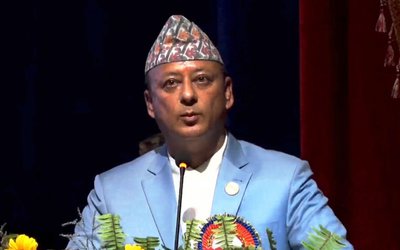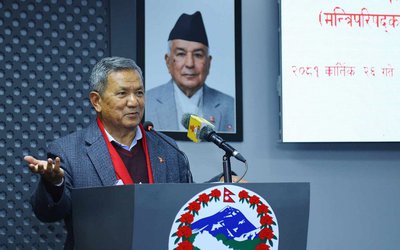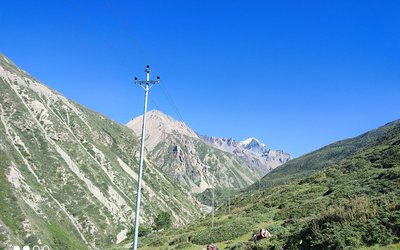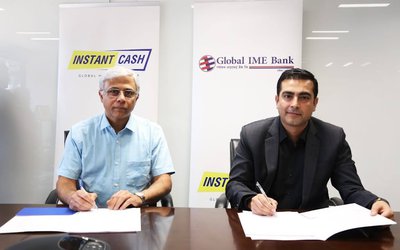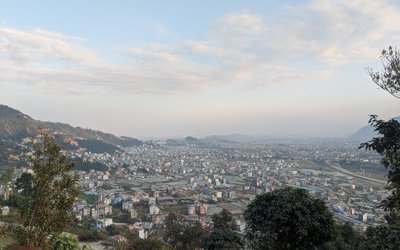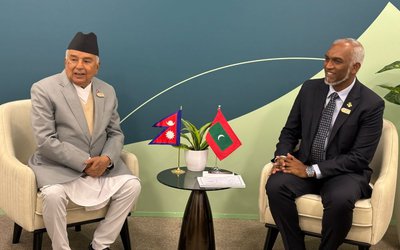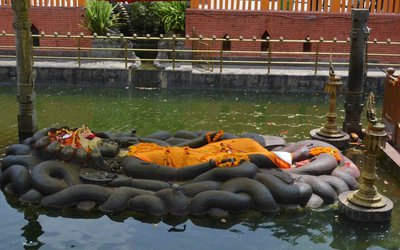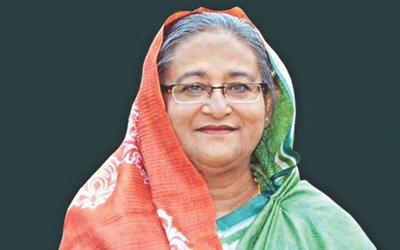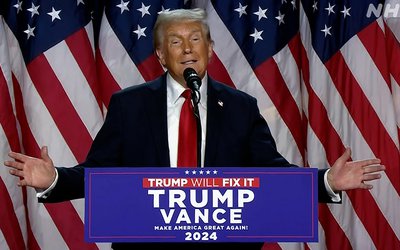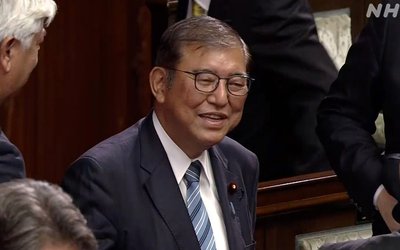
As Nepal’s private sector contributes to increasing electricity generation, USEF Nepal organised a lecture on water power and environment under its lecture and policy discussion series to celebrate the 70th Anniversary of US-Nepal relations.
Under the topic, water, power and environment: reflecting on resource development in Nepal, experts shared the view on Nepal’s priority in the water and power sector.
For well over half a century, Nepalis have dreamed of developing their tremendous water resources. But the progress has been slight and controversies many. This historical reality suggests that much wider academic and management perspectives are called for, particularly at a moment of profound political, economic, and regional changes.
As Nepal strives to move forward amid these great uncertainties, how should it address the water sector’s daunting technical, economic, environmental, and governance challenges?
Moderated by Tom Robertson, Ph.D., Executive Director, Fulbright Nepal, the event heard speakers Dipak Gyawali, Nepal Water Conservation Foundation, Ajoy Karki, Sanima Hydro and Engineering Pvt. Ltd, Kumar Pandey, Vice President, Independent Power Producers' Association, Nepal (IPPAN) and Pooja Sharma, Head of Energy Programme, Practical Action, delivering their views about hydropower development in Nepal.
At a time when Nepal is expecting to supply 4000 MW of power within four years from its current capacity of 972 MW, there are opportunities and challenges as well. Challenges are to balance supply and generation. As most of the power projects, which are going to be completed are run-off-the river, there is the need to have some storage projects. The current supply includes private sector generating 441 MW, NEA 473 MW thermal 53.4 MW, micro-hydro 4.5 and solar 100 Kilowatt. This status will change soon and Independent Power Producers are going to be the lead producers.
Out of 972 MW power supplied in national grid, NEA-operated plants contribute 477 MW. Although, the private sector came late in the scene, it is generating 441 MW. NEA also imports 311 MW from India. The current demand is 1260 MW and next year the demand will increase by 10 percent.
“Nepal’s power scenario will change soon with more power projects operating in the coming years,” said Kumar Pandey, vice president of IPAN. “Private sector is ready to invest more money in power sector.”
Within three years, the demand will reach 1600 MW. More opportunities will open for private sector investment. Only recently Butwal Power Company signed a Memorandum of Understanding with three prestigious investment companies to generate 1000 MW power.
To invest almost 200 billion rupees, BPC and Chinese companies have registered STIV International Nepal Hydro development. The company is constructing 100 MW capacity lower Marsyangdi. Dugar group is now constructing a hydropower plant, with a capacity of 159 MW, in Likhu River, bordering Ramechap and Okhaldhunga and the group is planning to complete the project by 2022. They have also announced to complete 500 MW projects in future.
Similarly, Hydro venture is constructing a 86-MW power plant in Solu River. Four power plants with 54, 27, 25 and 12 MW are under construction in Dordi river of Lamjung district.
“The private sector has the technical capability and investment. This is what they are investing in hydropower sector. The current pace shows that they will outnumber NEA shortly in terms of generation,” said Ajoy Karki, Sanima Hydro and Engineering Pvt. Ltd.
Within four years, the private sector will contribute 3500 MW of power to the national grid. The current trend shows that within a few years, there will be more power supplied by Independent Power Producers. However, all these projects are based on run-off-the-river plants. That means, there will be a huge gap of supply and demand.
Run-off-the river projects will generate more energy during monsoon and they will drastically reduce power generation in winter. Here comes the need to invest in storage projects.
“Construction of storage project needs a huge investment and there are risks involved. The government needs to invest money here,” said Dipak Gyawali at the talk program.
As NEA is working to construct big projects, the private sector is also following suit. The private sector is also increasing its capacity to invest in 100-MW projects. At a time when the NEA’s power projects are running slowly, private sector leaders are taking speed.
“There is the need to take care of the environmental aspects. Community-based off-grid solar-power projects also need to be encouraged,” said Pooja Sharma, Head of Energy Programme, and Practical Action.
As there is a lot of opportunity in hydropower investment , the private sector continues to come in. “Nepal’s economy is getting larger and the private sector is encouraged in making investment. Although there is a problem for the private sector to find investors, they have a faster way to get things done compared to the capacity of the public sector,” said Pandey.
Within three years, there will be 25 MW Kabeli B, 48 MW Upper Khimti, 42 MW Ankhu Khola, 42 MW Mistrikhola, 20 MW Upper Modi, 82 MW lower Solu,23.5 Upper Solu and other. Next year 245 MW will be added in national grid except Upper Tamakosi. Within two years, 456 MW Upper Tamakosi, 111 MW Rasuwagadi, 42 MW lower Sanjen, 15 MW Sanjen and 102 MW middle Bhotekosi will be completed. NEA’s 30 MW Chameliya has already completed and 14 MW Kulekhani will be completed within six months.
If things go in the present trend, Nepal’s power sector will face another crisis with surplus energy in monsoon and power crisis in winter. “Nepal’s internal demand will be met by the projects under construction in monsoon. The government has to start investment in bigger storage projects,” said Gyawali.


Mai Khola Project under construction
- NEA: Kul Man Ghising, A Cool Man
- Oct 28, 2024
- DASHAIN FESTIVAL : Festival of Unity
- Oct 04, 2024
- NEPAL-CANADA Bilateral Meeting
- Oct 04, 2024
- MIDDLE BHOTEKOSHI: Final Stage
- Sep 23, 2024
- UDIPUR SUBSTATION: Improve Quality Of Distribution
- Sep 19, 2024

